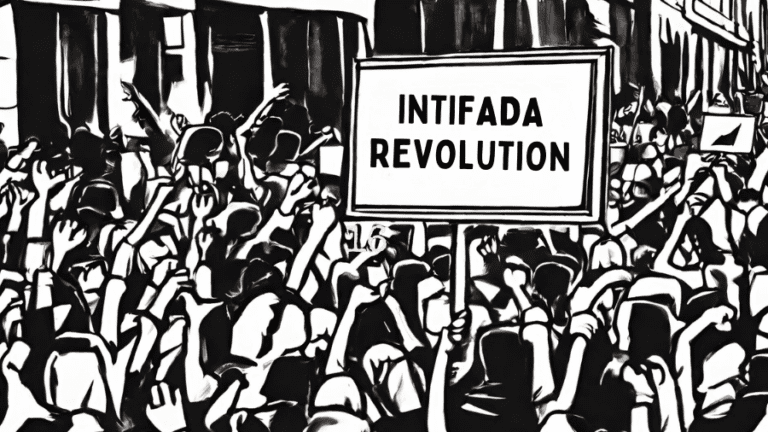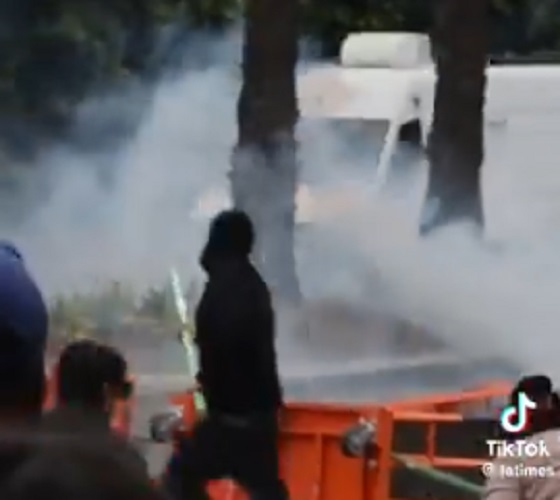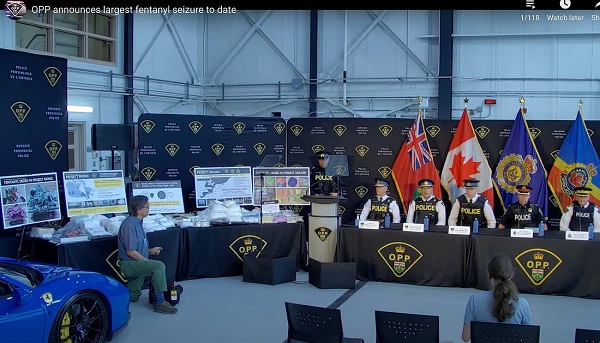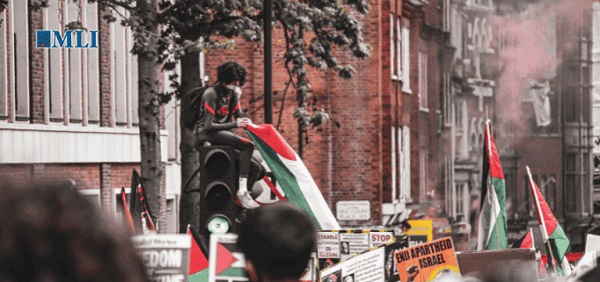International
Globalizing intifada is the same as globalizing jihad: Hussain Ehsani

From the MacDonald Laurier Institute
By Hussain Ehsani
Canadian authorities must realize that calls for “intifada” constitute hate and even potentially an incitement to violence
When ISIS conducted its terrorist attacks on Mosul, Iraq in June 2014, several Mosul residents celebrated it as a victory for the terror group and welcomed them to the city. In March 2019, ISIS was defeated in a fight with Kurdish special units Peshmerga, Iraqi Forces, and the international coalition, and this time, five years later, Mosul celebrated the defeat of ISIS. Mosul had learned its lesson under ISIS’ reign of terror. Likewise, the fantasy of celebrating Islamic Jihadist and terrorist groups as liberators has disappeared, for the most part, across the Middle East.
However, the same cannot be said about the veneration of terror in the West. Less than 24 hours after the brutal October 7 terrorist attacks by Hamas on civilians and the Jewish state, Canada witnessed horrific and unimaginable scenes. People across the country paraded with Palestinian flags, chanting “Allah Akbar,” “Free Palestine,” “From the river to the sea, Palestine will be free,” and “Long live Intifada” — celebrating the Hamas attack that resulted in the murder of 1,200 Israelis. The scenes reminded me of Mosul’s celebration of ISIS’ victory in 2014, but this time they took place in in Mississauga, Ontario.
As Israel began its counter-terror operation the mobs became more aggressive – organizing rallies across the country, blocking intersections, threatening Jewish Businesses, attacking synagogues with guns and Molotov cocktails, and issuing bomb threat against the largest Jewish high school in Canada.
Although Hamas, Palestinian Islamic Jihad (PIJ), and the Popular Front for the Liberation of Palestine (PFLP) are listed as terrorist organizations by the Government of Canada, these groups are being praised by the pro-Jihadi mobs. They have flown the flag Hamas and the PFLP, they have worn green headbands representing Hamas, and yellow armbands of PIJ. Some in Toronto even raised the flag of the Taliban. Others have worn jackets with the symbols of Jihad, martyrs, and Al Qaeda symbols during protests. All while they scream “Intifada, intifada, long live the intifada,” “Globalize the intifada,” and “There is only one solution, intifada, revolution” – unmistakable calls for violence against Jews that refer to the bloody Palestinian terror campaigns of the late 80s and early 2000s.
Despite the clear connection between the terror groups and this violent call, law enforcement across the country have been reluctant to act and make arrests on those shouting “Intifada.” This refusal encourages the pro Hamas mobs to continue their antisemitic rallies and disguises calling for violence as a progressive solution for the Palestinian cause.
There is no doubt that calling for intifada is calling for violence. This is most clearly demonstrated by the Second Palestinian Intifada which consisted of suicide bombings, shootings, stabbings, and other terror tactics. These tactics have been used by other major Islamic Jihadist groups such as the Taliban, ISIS, and Al Qaeda. In April 1993, during the first Intifada, Hamas suicide bomber Saher Tamam Al Nablusi detonated the switch under the seats in his car and blew himself up on the West Bank. Based on the result of this attack, Hamas and its allies kicked off massive campaign of suicide attacks up against Israel. According to the statistics of Israeli institutions and studies, during two phases of Intifada, Hamas, PIJ, and PFLP conducted more than 130 suicide attacks. In the aftermath of the Intifada, the tactic of car bombs was vastly used by the Haqqani network in Afghanistan, Al Qaeda in Iraq, the Taliban in Afghanistan, and ISIS in Iraq and Syria.
And Intifada is not restricted to terror attacks but includes a clear strategy undergirded by religious ideology. For example, the book “Palestinian Resistance against Israel in Jerusalem” lays out the rhetoric and chants that Palestinians shouted in protests during the first Intifada, including: “Khaybar Khaybar O Jewish! The Mohammad Army will come back.” This chant refers to the Battle of Khaybar in which Muslims fought against the Jews in the first era of Islam in the Khaybar district of Medina in Hejaz in early 628 CE, which led to the victory of Muslims. “Mohammad Army” in this context is a metaphor for all Muslims around the world, and the chant is calling all Muslims to assemble another Khyabar, which strives to provoke and unite all Muslims against Jews. Another example “Praise the God O Muslim – explode the head of Zionist.” This chant was yelled in Toronto, Ontario. This has no other meaning except Jihad and the militarization of Muslims around the world to eliminate Jews and Israelis.
Hamas, Palestinian Islamic Jihad, and their allies are utilizing Jihadi tactics to pursue their objectives here in Canada. Calling for “Intifada” in the streets, malls, subway stations, and university campuses in Canada is a direct call for Jihadism and its principles to be enacted in the West. This is why the globalization of Intifada means globalizing the Jihad. It means globalizing violence against Jews.
Canadian authorities should realize that calls for “intifada” constitute hate and even potentially an incitement to violence. If they fail to, it will not be long until we see ISIS flags and chants for reviving the Caliphate. They are one and the same and we cannot allow this hate to fester unaddressed.
Hussain Ehsani is a Middle East affairs expert focused on the Abraham Accords and Canadian foreign policy.
Business
Carney praises Trump’s world ‘leadership’ at G7 meeting in Canada

From LifeSiteNews
Canada’s prime minister said it was a ‘great honor’ to host the U.S. president and praised him for saying Canada wants to work with the U.S. ‘hand-in-hand.’
During the second day of the G7 leaders meeting in the Kananaskis area in Alberta, Canadian Prime Minister Mark Carney praised U.S. President Donald Trump’s world “leadership” despite saying many negative things about him during his election campaign.
While speaking to reporters Monday, Trump hinted that a new trade deal between Canada and the United States was potentially only “weeks” away. This came after a private meeting with Carney before the official G7 talks commenced.
“We’ve developed a very good relationship. And we’re going to be talking about trade and many other things,” Trump told reporters.
Carney was less vocal, however. He used the opportunity to tell reporters he was happy Trump came to his country for the G7 meeting, saying it was a “great honor” to host him.
“This marks the 50th birthday of the G7, and the G7 is nothing without U.S. leadership,” Carney told reporters.
He then spoke about Trump’s “personal leadership” on world issues and praised him for saying Canada wants to work with the U.S. “hand-in-hand.”
Carney ran his election campaign by claiming the Conservative Party would bow to Trump’s demands despite the fact that the party never said such things.
During his federal election campaign, Carney repeatedly took issue with Trump and the U.S. that turned into an anti-American Canadian legacy media frenzy.
However, the reality is, after Carney won the April 28 federal election, Trump praised him, saying, “Canada chose a very talented person.”
Many political pundits have said that Carney owes his win to Trump, as the U.S. president suggested on multiple occasions that he would rather work with Carney than conservative leader Pierre Poilievre.
Trump has routinely suggested that Canada become an American state in recent months, often making such statements while talking about or implementing trade tariffs on Canadian goods.
As for Carney, he has said his government plans to launch a “new economy” in Canada that will involve “deepening” ties to the world.
Business
Carney’s Honeymoon Phase Enters a ‘Make-or-Break’ Week

From the National Citizens Coalition
The National Citizens Coalition (NCC) is sounding the alarm on a critical week for the Carney government, which, despite enjoying an unearned honeymoon in the polls, has delivered zero results for everyday Canadians. As the G7 summit looms large and the House of Commons prepares to adjourn, this is a make-or-break moment for Prime Minister Mark Carney to prove his government is more than empty promises. Canadians are watching, and the NCC is calling out the glaring failures that threaten a grim summer of economic decline, and continued crime, chaos, and rising unemployment.
Housing Minister Gregor Robertson Caught in $10.85 Million Scandal
Recent revelations from Blacklock’s Reporter expose Housing Minister Gregor Robertson’s attempt to conceal $10.85 million in personal property investments during Commons questioning. This shocking lack of transparency from the minister tasked with addressing Canada’s housing crisis raises serious questions about his integrity and ability to prioritize Canadians struggling with skyrocketing costs. While Robertson dodges accountability, and Carney apparently scoffs at providing housing relief to millions suffering under a Liberal-made crisis, young professionals and young families are wondering if they’ll ever have a chance to own a home bigger than Canada’s much-maligned supply of ‘dog-crate condos.’
The NCC demands a full ethics investigation, the resignation of Gregor Robertson — who, as one of the architects of the Vancouver housing crisis, should have never been handed this file to begin with — and immediate action to restore trust in this critical portfolio.
Pipeline Delays and Provincial Obstruction Threaten Economic Growth
The Carney government’s inaction on pipelines is stalling Canada’s economic potential. Despite promises of “nation-building projects,” British Columbia and Quebec continue to block and veto critical energy infrastructure, with Carney failing to assert federal leadership. His vague talk of “consensus” and “decarbonized” barrels has led to zero progress, leaving Alberta’s economy in limbo and Canadians facing higher energy costs. With no clear plan to advance projects, the government is squandering opportunities to create jobs and secure energy sovereignty. The NCC urges Carney to act decisively this week to break the provincial logjam and deliver results.
Immigration Chaos: Lena Diab’s Unchecked Honour System Fails Canadians
Immigration Minister Lena Diab’s reliance on an ‘honour system’ for millions of temporary visitors with expiring visas is a recipe for disaster. As Canada grapples with unsustainable immigration levels, Diab’s apparent plan for millions of temporary workers and failed ‘diploma mill’ attendees assumes compliance without enforcement, ignoring the high-propensity for fraud, and the ongoing and urgent strain on housing, healthcare, and public services. The Liberals’ Strong Borders Act promises reform, but its loaded with unnecessary overreach and vague measures.
A lack of urgency leaves Canadians vulnerable to further crime, chaos, closed emergency rooms, high rents, and failing infrastructure. With immigration continuing to spiral out of control, the NCC calls for concrete action to drastically lower immigration targets, expedite deportations, and prioritize Canadian citizens and the record amounts of unemployed before the House adjourns.
Canadians Deserve Results, Not More Hollow “Elbows up” or “Team Canada” Rhetoric
This week’s G7 summit in Alberta and the impending House adjournment are the Carney government’s last chance to show leadership, before an undeserved summer break for a government that will be overseeing deepening economic decline, rising crime under a refusal to tackle catch-and-release bail, and growing unemployment. Canadians cannot afford another season of unfulfilled promises and unchecked crises. The NCC demands Carney use the G7 platform to secure trade stability, meaningful energy deals with our allies, and table a federal budget to address the cost-of-living crisis made worse by inflationary Liberal spending. Failure to act now will cement an early legacy of inaction and leave Canadians to endure a prolonged period of hardship.
“The Carney government’s honeymoon has been built on hype, not results,” says NCC Director Alexander Brown. “From Gregor Robertson’s hidden millions, to stalled pipelines, to an immigration system in continued disarray, Canadians — and particularly young Canadians — are being let down. This week is Carney’s chance to prove he can deliver beyond the lies that were told to placate a portion of the electorate at the polls. If he fails to act, the economic decline, the crime and chaos, will only worsen, and everyday Canadians will pay the price.
“True Canadian leaders like Alberta Premier Danielle Smith are in attendance at the G7 along with Carney. If actual acts of ‘nation-building,’ and not more net-zero de-growth, do not come naturally to the PM, he should turn to those who have never wavered in their quest to make life more affordable for the hard-working citizens they are privileged to represent, and who know when to get out of the way to allow Canadians to prosper. More of the same internal, ideological sabotage from the Liberals cannot ruin this dire moment for Canada’s rebirth and recovery.”
The NCC calls on all Canadians to hold the Carney government accountable. Join us in demanding transparency, action, and results before the House adjourns and the G7 summit concludes. Together, we can fight for a stronger, more prosperous Canada.
About the National Citizens Coalition: Founded in 1967, the NCC is a non-profit organization dedicated to advocating for individual freedom, lower taxes, less government waste, and a stronger Canada. We hold governments accountable and fight for the interests of everyday Canadians.
-

 Health7 hours ago
Health7 hours agoLast day and last chance to win this dream home! Support the 2025 Red Deer Hospital Lottery before midnight!
-

 Crime2 days ago
Crime2 days agoManhunt on for suspect in shooting deaths of Minnesota House speaker, husband
-

 Business1 day ago
Business1 day agoCarney’s European pivot could quietly reshape Canada’s sovereignty
-

 Alberta1 day ago
Alberta1 day agoAlberta’s grand bargain with Canada includes a new pipeline to Prince Rupert
-

 Aristotle Foundation10 hours ago
Aristotle Foundation10 hours agoThe Canadian Medical Association’s inexplicable stance on pediatric gender medicine
-

 conflict13 hours ago
conflict13 hours ago“Evacuate”: Netanyahu Warns Tehran as Israel Expands Strikes on Iran’s Military Command
-

 Energy12 hours ago
Energy12 hours agoCould the G7 Summit in Alberta be a historic moment for Canadian energy?
-

 Bruce Dowbiggin12 hours ago
Bruce Dowbiggin12 hours agoWOKE NBA Stars Seems Natural For CDN Advertisers. Why Won’t They Bite?





